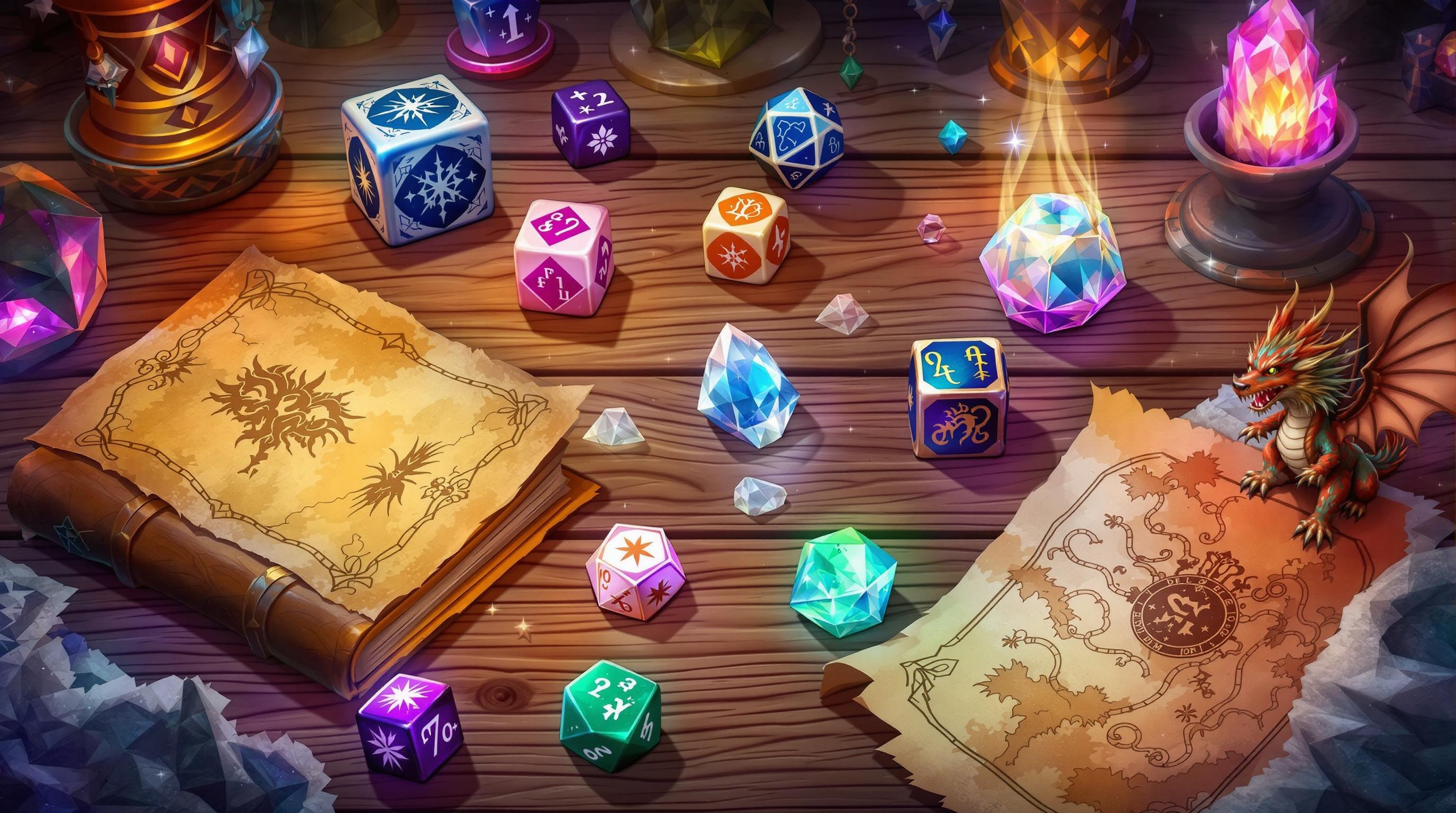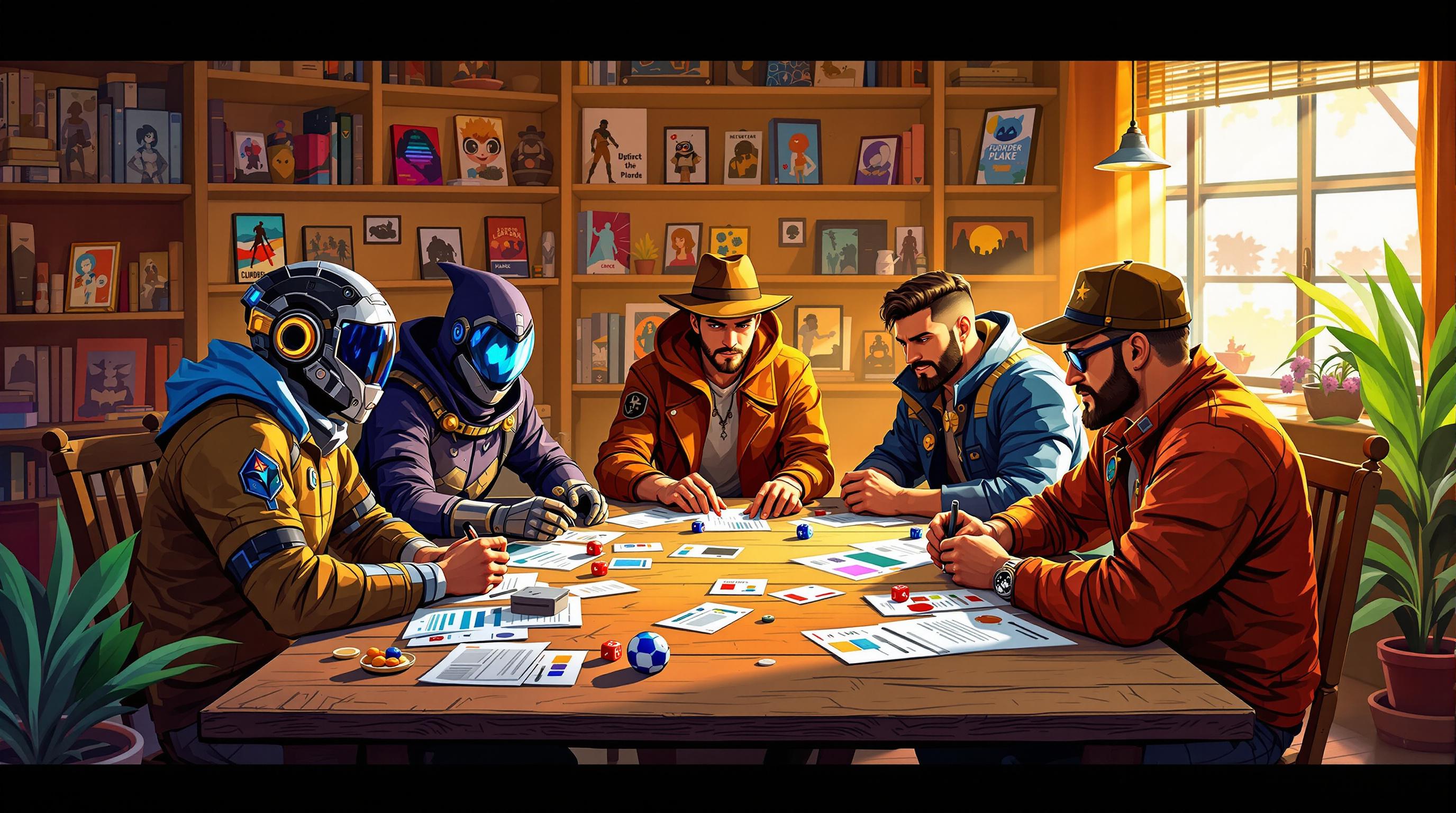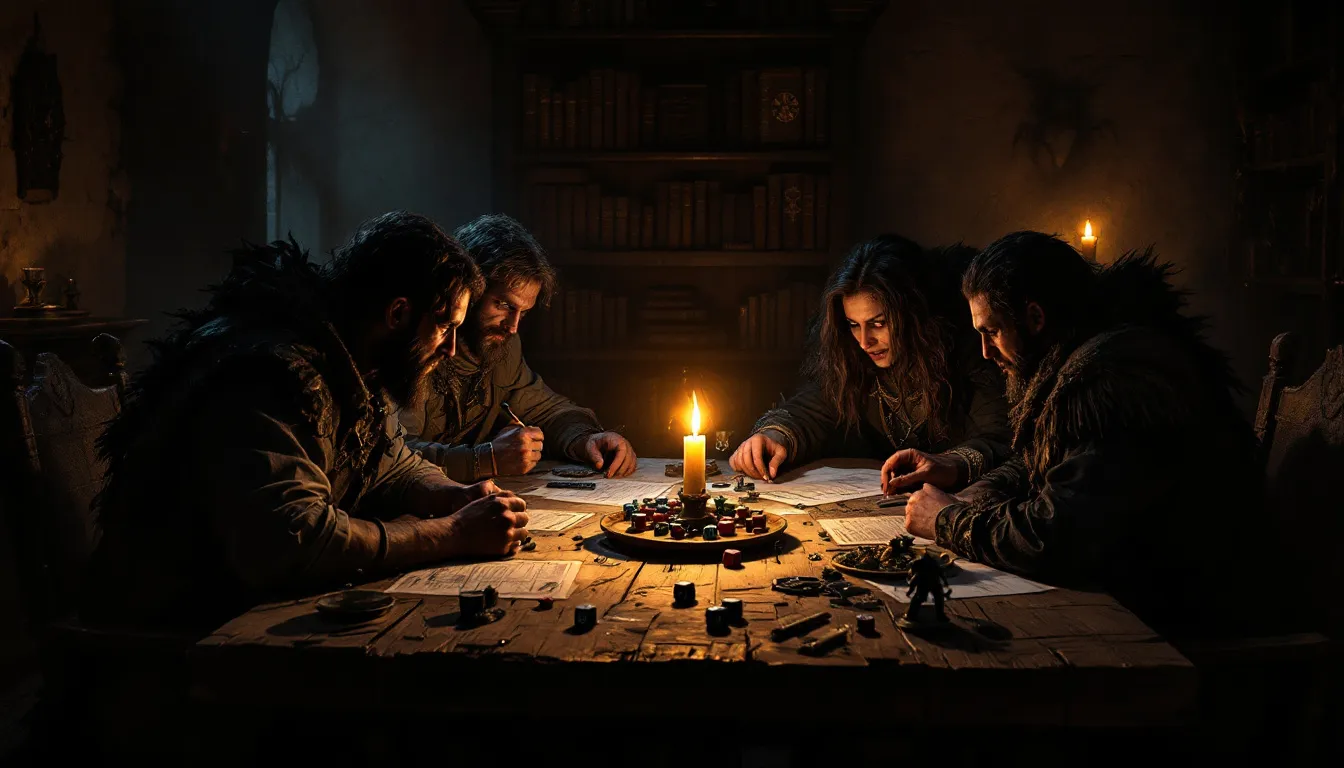Want to make your RPG world more immersive? Start by incorporating real-world societies into your game - but do it right.
Using elements from real cultures can add depth, believable characters, and engaging settings to your campaigns. But poorly researched or stereotypical portrayals can ruin the experience. Here’s what you need to know:
-
Why Use Real Cultures?
- Adds rich storytelling layers and relatable NPCs.
- Helps players connect with the game world.
- Offers opportunities to learn about diverse perspectives.
-
Common Mistakes to Avoid:
- Stereotypes (e.g., "Noble Savage" or "Exotic Mystic").
- Oversimplifying traditions or ignoring cultural diversity.
- Failing to research historical and social contexts.
-
How to Get It Right:
- Research deeply using academic sources and cultural experts.
- Build multidimensional NPCs and culturally aligned locations.
- Adapt historical details into fantasy elements while respecting their origins.
Quick Tip: Collaborate with experts, use credible resources like JSTOR, and playtest with diverse groups to ensure accuracy and respect in your portrayal.
Respectful world-building not only creates better games but also fosters meaningful storytelling. Keep reading to learn how to research, design, and implement real-world cultural elements effectively in your RPG campaigns.
How to ACTUALLY Worldbuild Cultures
Main Issues in Society Portrayal
Game Masters often face hurdles when incorporating real-world cultures into their campaigns. A recent study found that 70% of players prefer games that include diverse and well-researched cultural elements. Building on earlier discussions, let's dive into the common stereotypes and research gaps that can undermine accurate portrayals.
Avoiding Clichés and Oversimplification
Leaning on clichés and oversimplified stereotypes can weaken your story. Dr. Emily Johnson, a Cultural Anthropologist, points out:
"Oversimplifying cultural elements not only disrespects the cultures themselves but also limits the potential for rich storytelling."
Here are some stereotypes to watch out for and ways to move beyond them:
| Stereotype | Impact | Better Approach |
|---|---|---|
| The "Exotic Mystic" | Reduces complex spiritual traditions to shallow tropes | Study real belief systems and their role in society |
| The "Noble Savage" | Portrays sophisticated societies as primitive | Highlight historical achievements in technology, governance, or art |
| The "Monolithic Culture" | Treats entire cultures as uniform, ignoring internal diversity | Create subcultures and conflicting perspectives within the same group |
Breaking free from these stereotypes requires filling in the gaps with proper research.
Research Gaps and Knowledge Limits
Creating nuanced cultural portrayals takes more than surface-level understanding. Here are three areas where research often falls short:
-
Historical Context
Without a grasp of how societies evolve over time, portrayals can feel static and unrealistic. Understanding historical shifts adds depth and realism to fictional cultures. -
Social Dynamics
Complex relationships, such as family structures and power hierarchies, are often simplified. This can lead to shallow NPC interactions and weak world-building. -
Religious and Philosophical Systems
Spiritual traditions are sometimes reduced to game mechanics, missing the intricate ways beliefs shape daily life and community interactions.
To overcome these gaps, Game Masters can turn to academic studies, historical records, cultural experts, and workshops. Investing time in research can transform your campaign into a richer, more immersive experience.
sbb-itb-b8b00a5
Methods for Accurate Representation
These approaches address gaps in prior research by focusing on thorough investigation and thoughtful game design to ensure respectful and accurate cultural portrayals.
Research Steps and Sources
Use this structured framework for effective research:
| Research Phase | Key Sources | Focus Areas |
|---|---|---|
| Initial Overview | Academic journals, JSTOR | Historical timeline, geography, social hierarchy |
| Deep Dive | Ethnographic studies, Google Scholar | Customs, traditions, religious practices |
| Verification | Cultural centers, subject experts | Accuracy check, refining nuances |
| Application | Museum archives, primary sources | Visual references, authentic details |
When researching online, favor academic databases over general web searches. Use the findings to create characters and settings that truly reflect the studied culture.
Building Complex NPCs and Locations
Turn your research into engaging characters and immersive settings by weaving cultural elements into their dialogue, backstories, and environments.
Character Development
- Include specific dialects and culturally relevant expressions.
- Craft personal histories that represent cultural values.
- Highlight diverse perspectives on traditions within the culture.
Location Design
- Create social spaces that align with cultural values.
- Feature architecture that holds cultural significance.
- Arrange spaces in ways that reflect local customs and beliefs.
For instance, when designing a marketplace, think about how local trading customs, social hierarchies, and religious practices might shape vendor placements, bargaining styles, product displays, and social dynamics.
Cultural authenticity goes deeper than surface-level details. Each NPC should reflect their society’s worldview while maintaining unique personality traits and motivations.
Resources for World Creation
Transforming research into engaging game worlds requires the right tools. These resources can help you turn historical and cultural insights into compelling game content that resonates with players.
Converting History to Fantasy
Take historical details and reimagine them as fantasy elements while respecting their cultural roots. Here's a quick guide to get started:
| Historical Element | Fantasy Twist | Cultural Context to Keep in Mind |
|---|---|---|
| Trade Routes | Magical Portals | Preserve the idea of economic networks |
| Social Hierarchies | Unique Powers | Reflect existing social dynamics |
| Religious Practices | Divine Magic Systems | Maintain their spiritual essence |
| Cultural Festivals | Enchanted Celebrations | Retain their core meanings |
For example, when adapting a harvest festival, focus on the sense of community and tradition. You could weave in magical rituals, like crop blessings, that echo the festival's original purpose.
Working with Subject Experts
Collaborating with cultural experts ensures your world-building is accurate and respectful. Here’s how to find and work with the right people:
- Reach out to university anthropology departments
- Contact cultural heritage organizations
- Consult museum curators with regional expertise
- Partner with local cultural groups
When working with experts, keep these points in mind:
- Offer fair payment for their time and knowledge
- Share detailed project information to provide context
- Ask for specific feedback on cultural elements
- Incorporate their suggestions thoughtfully and document changes
Their expertise can help fine-tune your campaign’s cultural details, making your world feel more genuine and respectful.
TTRPG Games Directory

The TTRPG Games Directory is a treasure trove for Game Masters looking to create culturally enriched campaigns. It allows you to:
- Explore games organized by cultural themes
- Learn how others have adapted historical settings
- Study mechanics that emphasize cultural depth
This directory provides practical examples of games that successfully integrate cultural themes. Use it to inspire your campaigns and ensure your portrayals are both engaging and respectful.
Conclusion: Creating Better RPG Worlds
Why Research Matters
Good research can make or break a game. Studies reveal that media with diverse representation boosts audience engagement by up to 30%. This is just as true in tabletop gaming, where 85% of players say they prefer games that include a variety of cultures.
"When cultures are represented authentically, it not only enriches the story but also creates a more engaging experience for players." - Dr. Emily Johnson, Cultural Anthropologist
| Aspect | What It Adds to the Game | Why Players Love It |
|---|---|---|
| Cultural Accuracy | Realistic NPCs | Better character depth |
| Historical Context | Detailed worldbuilding | Greater immersion |
| Social Dynamics | Intriguing storylines | Meaningful decisions |
| Traditional Practices | Unique mechanics | Learning through play |
Designing Thoughtful Worlds
Research is just the first step - intentional design takes things further. Game designers are increasingly working with cultural consultants to create inclusive and immersive experiences.
Here are a few ways to balance creativity and respect:
- Use Reliable Sources: Dive into platforms like JSTOR or Google Scholar for credible information.
- Work with Experts: Collaborate with anthropologists or cultural practitioners for deeper insights.
- Gather Player Feedback: Playtest with diverse groups to uncover biases or missed details.
Respectful representation doesn’t just avoid missteps - it opens the door to richer, more meaningful stories. When Game Masters take the time to portray cultures with care, they create games that captivate, educate, and inspire players.


